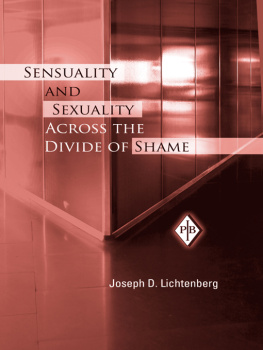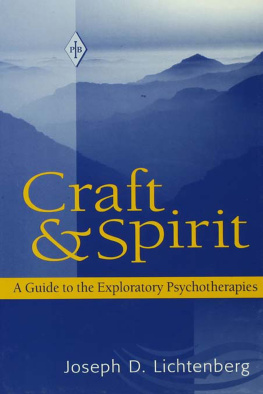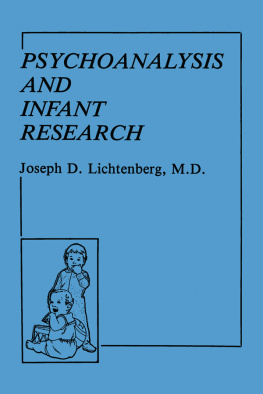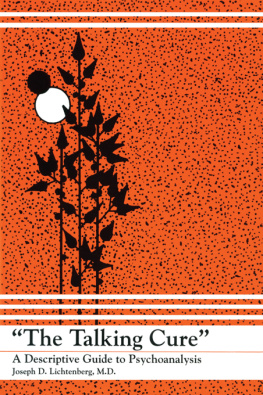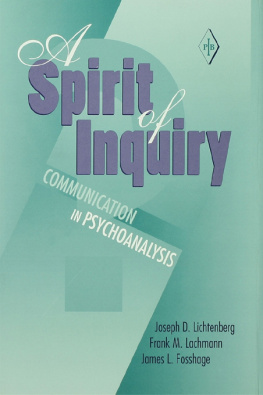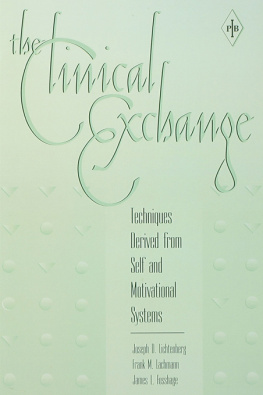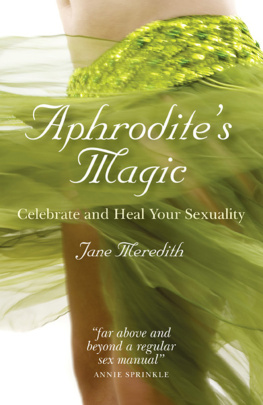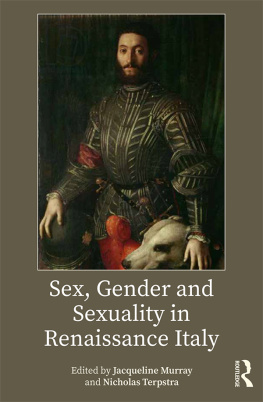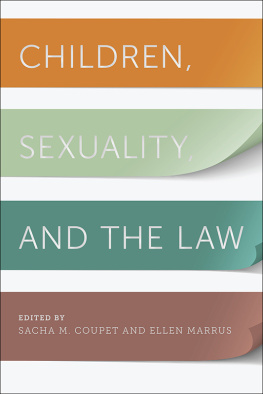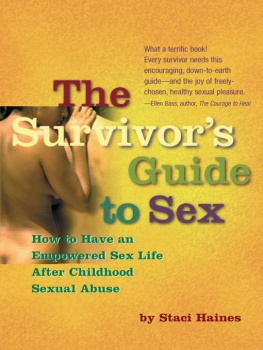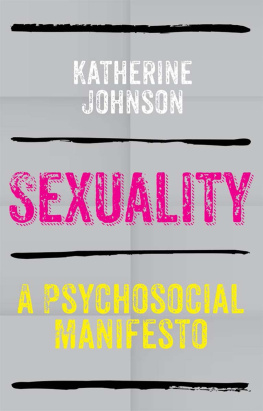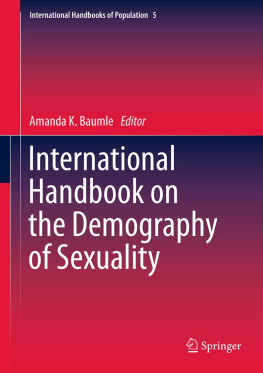S ENSUALITY
AND S EXUALITY
A CROSS THE
D IVIDE OF S HAME
| Psychoanalytic Inquiry Book Series |
| Volume 25 |
 | Psychoanalytic Inquiry
Book Series |
Vol. 1: Reflections on Self Psychology
Joseph D. Lichtenberg &
Samuel Kaplan (eds.)
Vol. 2: Psychoanalysis and Infant
Research Joseph D. Lichtenberg
Vol. 4: Structures of Subjectivity:
Explorations in
Psychoanalytic Phenomenology
George E. Atwood & Robert D. Stolorow
Vol. 7: The Borderline Patient: Emerging
Concepts in Diagnosis, Psychodynamics,
and Treatment, Vol. 2 James S. Grotstein,
Marion F. Solomon, & Joan A. Lang (eds.)
Vol. 8: Psychoanalytic Treatment: An
Intersubjective Approach
Robert D. Stolorow, Bernard Brandchaft,
& George E. Atwood
Vol. 9: Female Homosexuality: Choice
Without Volition Elaine V. Siegel
Vol. 10: Psychoanalysis and Motivation
Joseph D. Lichtenberg
Vol. 11: Cancer Stories: Creativity and
Self-Repair Esther Dreifuss Kattan
Vol. 12: Contexts of Being:
The Intersubjective Foundations
of Psychological Life
Robert D. Stolorow & George E. Atwood
Vol. 13: Self and Motivational Systems:
Toward a Theory of Psychoanalytic
Technique Joseph D. Lichtenberg, Frank
M. Lachmann, & James L. Fosshage
Vol. 14: Affects as Process: An
Inquiry into the Centrality of Affect in
Psychological Life Joseph M. Jones
Vol. 15: Understanding Therapeutic Action:
Psychodynamic Concepts of Cure
Lawrence E. Lifson (ed.)
Vol. 16: The Clinical Exchange: Techniques
Derived from Self and Motivational
Systems Joseph D. Lichtenberg,
Frank M. Lachmann, & James L. Fosshage
Vol. 17: Working Intersubjectively:
Contextualism in Psychoanalytic Practice
Donna M. Orange,
George E. Atwood, & Robert D. Stolorow
Vol. 18: Kohut, Loewald, and the
Postmoderns: A Comparative Study
of Self and Relationship
Judith Guss Teicholz
Vol. 19: A Spirit of Inquiry: Communication
in Psychoanalysis Joseph D. Lichtenberg,
Frank M. Lachmann, & James L. Fosshage
Vol. 20: Craft and Spirit: A Guide
to Exploratory Psychotherapies
Joseph D. Lichtenberg
Vol. 21: Attachment and Sexuality
Diana Diamond, Sidney J. Blatt,
& Joseph D. Lichtenberg
Vol. 22: Psychotherapy and Medication:
The Challenge of Integration
Fredric N. Busch & Larry S. Sandberg
Vol. 23: Trauma and Human Existence:
Autobiographical, Psychoanalytic, and
Philosophical Reflections
Robert D. Stolorow
Vol. 24: Jealousy and Envy: New Views
about Two Powerful Emotions
Lon Wurmser & Heidrun Jarass
Vol. 25: Sensuality and Sexuality Across the
Divide of Shame Joseph D. Lichtenberg
S ENSUALITY
AND S EXUALITY
A CROSS THE
D IVIDE OF S HAME
Joseph D. Lichtenberg
The Analytic Press | The Analytic Press |
Taylor & Francis Group | Taylor & Francis Group |
270 Madison Avenue | 27 Church Road |
New York, NY 10016 | Hove, East Sussex BN3 2FA |
2008 by Taylor & Francis Group, LLC
Printed in the United States of America on acid-free paper
10 9 8 7 6 5 4 3 2 1
International Standard Book Number-13:978-0-88163-475-4 (Softcover) 978-0-88163-474-7 (Hardcover)
No part of this book may be reprinted, reproduced, transmitted, or utilized in any form by any electronic, mechanical, or other means, now known or hereafter invented, including photocopying, microfilming, and recording, or in any information storage or retrieval system, without written permission from the publishers.
Trademark Notice: Product or corporate names may be trademarks or registered trademarks, and are used only for identification and explanation without intent to infringe.
Library of Congress Cataloging-in-Publication Data
Lichtenberg, Joseph D.
Sensuality and sexuality across the divide of shame / by Joseph D. Lichtenberg.
p.; cm. -- (Psychoanalytic inquiry book series; v. 25)
Includes bibliographical references and index.
ISBN 978-0-88163-474-7 (alk. paper) - ISBN 978-0-88163-475-4 (alk. paper)
1. Psychoanalysis. 2. Sensuality. 3. Sex (Psychology) 4. Shame. I. Title. II. Series.
[DNLM: 1. Psychoanalytic Theory. 2. Sexualitypsychology. 3. Interpersonal Relations. 4. Parent-Child Relations. 5. Shame. Wl PS427F v.25 2008 / WM 460.5.S3 L699s 2008]
RC504.L53 2008
616.89'17-dc22
2007017166
Visit the Taylor & Francis Web site at
http://www.taylorandfrancis.com
and the Analytic Press Web site at
http://www.analyticpress.com
ACKNOWLEDGMENTS
My idea to reconsider in depth my original presentation of the sensual sexual motivational system began at the 2006 meeting of the Eastern Division of the International Association for Psychoanalytic Self Psychology (IAPSP) in Boston. I was stimulated by a presentation of Malcolm Slavin and discussions by all the members but particularly Shelley Doctors and my prior coauthors Frank Lachmann and James Fosshage. My already-formed central conception about the role of culture-derived shame separating sensuality and sexuality crystallized as I heard Peter Fonagy present a similar proposal using a different frame to develop it. As I wrote different chapters, I was aided and stimulated by discussions by numerous colleagues at presentations, such as at the 2006 IAPSP meeting in Chicago. I am especially indebted to Adrienne Harris, Estelle Shane, Sandra Hershberg, Heidi Block, and Andrew Morrison, who have led me to make specific additions and reformulations. Alan Kindler introduced me to the research of Katherine Frank and provided me with the opportunity to present perspectives to which I refer in the text derive from friends and colleagues, like that of Robert Stolorow on intersubjectivity, Jessica Benjamin on subjectivity in female development, Steven Mitchell and Lewis Aron on the relational perspective, and Ernest Wolf on selfobject experience. These approaches have become a core way of my thinking. My daughter, Amy Lichtenberg Saloukha, was instrumental in the preparation of the manuscript. My wife, Charlotte, patiently read and listened to portions of the manuscript, especially those for which I had uncertainties, and offered her sage advice. Finally, for me as a psychoanalyst, the most meaningful testing ground for proposals like those I advance is in the clinical setting of my patients and me struggling to come as close to getting it right about their and my sensual and sexual experiences as it affects their happiness and ability to relate, love, and lust lovingly. My final debt is to the many men and women who have trustingly revealed their inner and usually private worlds to me.
INTRODUCTION
Sex, according to an anonymous wit, is the joker in the deck. Looking at most recent mainstream psychoanalytic literature, a reader could easily conclude sex, rather than any longer a wild card, has been tamed into established formulas such as psychosexual stages and an Oedipus complex. New Yorker cartoons attest to the public familiarity with and acceptance of these abstractions. Fonagy (2006), in his plenary address on a genuinely developmental theory of sexual enjoyment, noted: A frightening survey of the use of sexual and relational language in the electronically searchable journals of psychoanalysis showed a dramatic decline in words in psychoanalytic articles directly concerning sexuality. In 1996 (pp. 871883), Green asked sardonically, Has sexuality anything to do with psychoanalysis? Of course, there are exceptions. A considerable body of literature has been developed by feminists and by analysts reconsidering formulations about homosexuality. In 2000, a journal, Studies in Gender and Sexuality, began publication. Mitchell in 2002 wrote Can Love Last? The Fate of Romance Over Time . Another exception that I draw on extensively is the contribution made by analytic researchers steeped in attachment theory to sexuality (Diamond, Blatt, & Lichtenberg, 2007).

